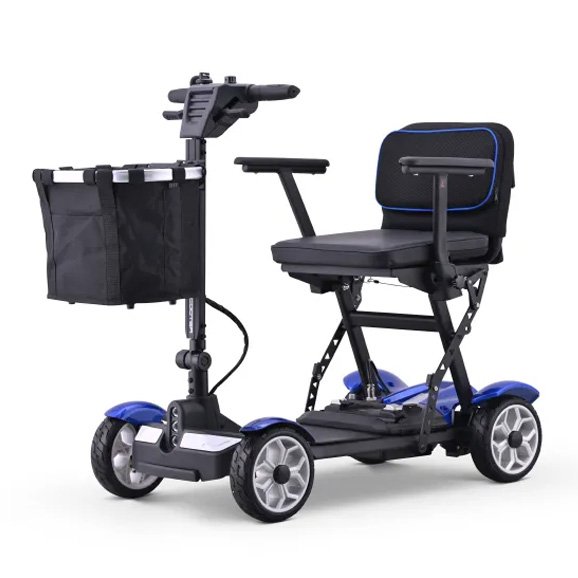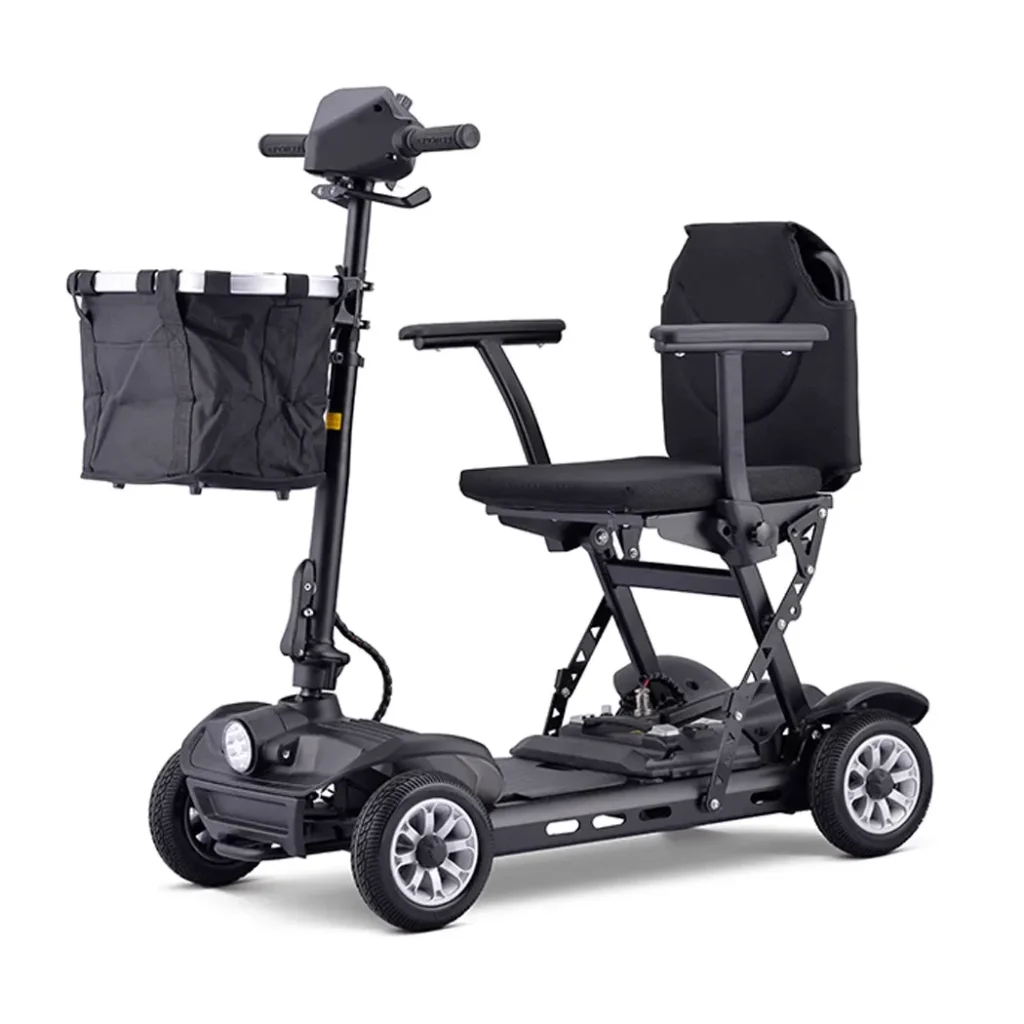
What type of batteries are in mobility scooters?
Mobility scooters have revolutionized personal transportation for millions of people worldwide, offering independence and freedom of movement to those with mobility challenges. At the heart of every mobility scooter lies its most critical component – the battery system. Understanding the different types of batteries available is essential for making informed decisions about purchasing, maintaining, or upgrading your mobility device. Today’s market increasingly features mobility scooters with lithium batteries, representing a significant advancement over traditional power systems.
The evolution of mobility scooter battery technology reflects broader advances in energy storage solutions. What began with basic lead-acid systems has expanded to include sophisticated lithium ion batteries for folding mobility scooters and other advanced technologies that deliver superior performance, extended lifespan, and enhanced user convenience. This technological progression has fundamentally transformed how we approach mobility assistance devices.

Lead-Acid Batteries: The Traditional Foundation
Lead-acid batteries have served as the backbone of mobility scooter power systems for decades and continue to be widely used across many models today. These batteries come in three primary configurations, each offering distinct advantages for different applications and budgets.
Sealed Lead-Acid (SLA) batteries represent the most common and economical option found in traditional mobility scooters. These systems typically utilize 12V batteries arranged in pairs for 24V operation or sets of four for 48V systems, with capacities ranging from 12Ah to 75Ah depending on the scooter’s size and intended use. While SLA batteries offer lower upfront costs, they require careful maintenance, regular charging cycles, and typically need replacement every 1-2 years with proper care. Their significant weight can impact scooter portability and overall handling characteristics.
Absorbed Glass Mat (AGM) batteries represent an advancement over standard SLA technology, incorporating fiberglass mat separators that absorb the electrolyte solution. This design provides better vibration resistance, improved deep-cycle performance, and maintenance-free operation. AGM batteries offer superior reliability and longer service life compared to conventional lead-acid systems, though at a moderate price premium.
Gel batteries utilize silica gel electrolyte instead of liquid acid, creating a sealed system with exceptional deep-cycle capabilities and improved temperature tolerance. These batteries excel in applications requiring frequent deep discharging and offer extended lifespan compared to standard lead-acid options. While more expensive initially, gel batteries often provide better long-term value through reduced replacement frequency and improved performance consistency.
Lithium-Ion Batteries: The Modern Revolution
Lithium-ion technology has emerged as the gold standard for modern mobility scooters, offering transformative improvements in virtually every performance metric. This advanced battery chemistry has enabled the development of lighter, more capable, and more convenient mobility solutions that were impossible with traditional lead-acid systems.
Lithium Iron Phosphate (LiFePO4) batteries have become the predominant choice for mobility scooter applications due to their exceptional safety profile and performance characteristics. These systems offer remarkable cycle life spanning 2000-5000 charge cycles, consistent power output throughout the discharge cycle, and significantly reduced weight compared to lead-acid alternatives. Modern lithium battery mobility scooters feature built-in Battery Management Systems (BMS) that provide comprehensive protection against overcharging, over-discharging, and thermal issues while ensuring optimal performance and safety.

The weight advantage of lithium systems cannot be overstated – these batteries typically weigh 60-70% less than equivalent lead-acid units, dramatically improving scooter maneuverability and transportability. This weight reduction enables longer travel ranges, reduced strain on mechanical components, and easier handling for users with limited physical strength.
Lithium Nickel Manganese Cobalt (NMC) batteries offer even higher energy density than LiFePO4 systems and are commonly found in folding and portable mobility scooters where space and weight constraints are paramount. When searching for mobility scooters lithium batteries, users will find that these batteries provide excellent power-to-weight ratios and are particularly suitable for high-performance applications requiring maximum range in compact form factors.
Performance Advantages of Lithium Technology
The superiority of lithium batteries extends beyond simple weight savings to encompass fundamental improvements in user experience and operational efficiency. Unlike lead-acid batteries that experience significant voltage drop as they discharge, lithium systems maintain consistent voltage output from full charge to near-empty, ensuring steady performance throughout the entire operating cycle.
Charging characteristics represent another significant advantage of lithium technology. Most lithium battery systems achieve full charge in 2-4 hours compared to the 8-12 hours required for lead-acid batteries. This rapid charging capability enables more spontaneous travel plans, reduces downtime between uses, and provides greater flexibility in daily scheduling.
The extended range capability of lithium-powered mobility scooters typically provides 20-40% greater distance per charge compared to equivalent lead-acid systems. This improvement stems from both higher energy density and more efficient power delivery throughout the discharge cycle, allowing users to travel farther with confidence.

Specialized Applications and Configurations
Folding and portable mobility scooters have been revolutionized by lithium battery technology, as the weight and size constraints of these devices make lithium systems virtually essential. These compact mobility solutions typically feature removable battery packs with integrated carrying handles, airline-friendly designs under 300Wh capacity, and quick-disconnect systems for convenient removal and charging. Many users specifically seek lithium batteries for mobility scooters when upgrading their existing systems.
Heavy-duty and long-range mobility scooters benefit from high-capacity lithium systems ranging from 20-40Ah, often incorporating dual battery configurations for maximum range. These advanced systems may include fast-charging capabilities, sophisticated battery management with smartphone connectivity, and modular designs allowing capacity expansion as needed.
Climate considerations play an important role in battery selection, as lithium systems maintain superior performance in both cold and hot weather conditions. While lead-acid batteries can lose significant capacity in freezing temperatures, lithium batteries continue operating effectively across a broader temperature range. Quality lithium systems incorporate thermal management features that protect against overheating, whereas lead-acid batteries are more susceptible to heat-related damage and reduced lifespan.
Safety Systems and Battery Management
Modern lithium battery systems incorporate comprehensive safety mechanisms that far exceed the protection available with traditional lead-acid technology. Battery Management Systems (BMS) continuously monitor individual cell voltages, prevent overcharging and over-discharging, balance cell charges for optimal performance, and provide thermal protection with automatic shutdown capabilities in fault conditions.
These sophisticated protection systems include short-circuit protection, overcurrent protection, temperature monitoring, and communication interfaces with scooter electronics. The inherent safety of lithium iron phosphate chemistry, combined with advanced management systems, creates mobility solutions that are both high-performing and exceptionally safe for daily use.
Economic Considerations and Long-Term Value
While lithium batteries require higher initial investment compared to lead-acid alternatives, they often provide superior long-term value through extended service life, reduced maintenance requirements, and improved performance consistency. Quality lithium systems can operate effectively for 5-10 years compared to 1-2 years for lead-acid batteries, significantly reducing replacement costs over the scooter’s lifetime.
The maintenance requirements of lithium systems are virtually nonexistent, eliminating the need for regular water level checks, terminal cleaning, and complex charging management required by lead-acid batteries. This reduced maintenance burden translates to lower total cost of ownership and improved user convenience.
Regional Availability and Future Developments
The United Kingdom and other developed markets have experienced rapid adoption of lithium battery mobility scooters, with manufacturers increasingly offering lithium options across their entire product lines. Those searching for lithium batteries for mobility scooters uk will find comprehensive options from local suppliers and manufacturers. Regional considerations include compliance with transportation regulations, insurance implications for higher-value systems, and availability of service and replacement components.
Future developments in mobility scooter battery technology include solid-state batteries with improved safety and energy density, graphene-enhanced lithium systems for faster charging, and wireless charging infrastructure for ultimate convenience. Smart battery integration will likely include smartphone applications for monitoring, GPS tracking with battery status, predictive range calculations, and remote diagnostics capabilities.
